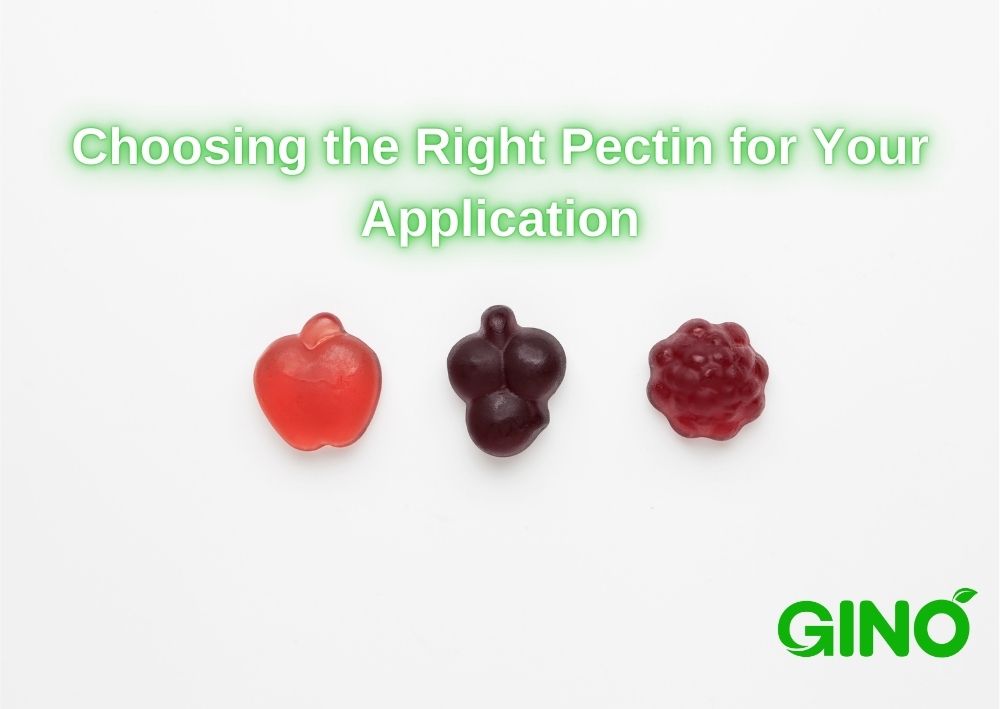
High Methoxyl Pectin vs Low Methoxyl Pectin - What’s Best for Your Product?
High Methoxyl Pectin vs Low Methoxyl Pectin
Introduction
When it comes to formulating with pectin, one of the most important decisions you’ll face is whether to use high methoxyl pectin or low methoxyl pectin.
These two types of pectin behave differently in various applications, which can directly impact your product’s texture, stability, and overall quality.
In this guide, we’ll break down the key differences between high methoxyl pectin vs low methoxyl pectin, so you can make informed decisions for your formulations.
Whether you're working in the jam, jelly, dairy, or confectionery industry, understanding the role of pectin will give you an edge in achieving your desired results. Let’s dive in!

1. The Basics of Pectin
Pectin is a natural polysaccharide found in plant cell walls, particularly in fruits like apples and citrus. It's widely used in the food industry as a gelling agent, stabilizer, or thickener in various applications. However, not all pectin is the same, and this brings us to the two main types: high methoxyl (HM) and low methoxyl (LM) pectin.
Before we break them down further, here’s the core difference: HM pectin requires sugar and acid to gel, while LM pectin can gel in the presence of calcium, making them ideal for different product formulations.
Gel Formation Requirements:
HM pectin requires both high sugar content (typically over 55%) and acidic conditions (pH between 2.8 and 3.5) to form a gel. This is why you’ll often find HM pectin used in high-sugar applications such as jams, juices, confectionery. etc.
Ideal Applications:
- Jams and jellies
- High-sugar candies
- Fruit spreads
- Fruit-based desserts
Texture and Stability:
The texture provided by HM pectin tends to be firmer, which is perfect for products where you need a solid, set gel. Due to the high sugar requirement, it also helps with product preservation and shelf life.
Challenges:
HM pectin doesn’t work well in low-sugar or sugar-free applications. If your product has a lower sugar content or requires a more flexible texture, LM pectin might be a better choice.
Gel Formation Requirements:
Unlike HM pectin, LM pectin gels in the presence of calcium ions rather than relying on sugar. This makes it a go-to option for low-sugar, sugar-free, or even no-sugar formulations. It also works in less acidic environments compared to HM pectin.
Ideal Applications:
- Low-sugar or sugar-free jams and jellies
- Dairy products like yogurt
- Acid-sensitive applications (e.g., cream cheese)
- Low-calorie desserts
- Fruit fillings and glazes
Texture and Stability:
LM pectin creates a softer, more elastic gel compared to HM pectin. This flexibility is often ideal for dairy products and items where a more delicate texture is preferred. Additionally, it allows for more varied applications as it doesn’t depend on sugar or acid to set, giving formulators more room to innovate.
Challenges:
While LM pectin provides greater versatility, it requires the presence of calcium for gelling. This means you’ll need to carefully manage calcium content in your recipe, which can introduce a bit of complexity during formulation.

4. Choosing the Right Pectin for Your Application
When deciding between high methoxyl pectin vs low methoxyl pectin, consider the following:
Sugar Content:
If your formulation includes a high amount of sugar, HM pectin will likely be your best bet. It thrives in sugary environments and delivers a firm, stable gel. On the other hand, if you’re working on a low- or no-sugar product, LM pectin is the way to go.
pH Levels:
Acidic products tend to work well with HM pectin, while LM pectin can handle a broader pH range, making it suitable for dairy and other acid-sensitive applications.
Desired Texture:
For firmer textures, HM pectin is ideal. However, if you’re looking for a softer, more elastic consistency, LM pectin offers that flexibility.
Calcium Availability:
Since LM pectin requires calcium for gelling, you’ll need to ensure calcium is either naturally present in your ingredients or added during the formulation process. HM pectin doesn’t have this requirement, which simplifies the formulation process in some cases.
5. Conclusion
In the battle of high methoxyl pectin vs low methoxyl pectin, the right choice comes down to your specific product requirements. Whether you need a firm gel for a sugary jam or a soft, flexible gel for a dairy-based dessert, understanding the behavior of these two types of pectin will help you achieve the perfect texture, stability, and performance in your product.
At Gino Gums, we specialize in providing high-quality hydrocolloids, including both high methoxyl and low methoxyl pectin. We understand that every product formulation is unique, which is why we’re here to offer tailored solutions that meet your specific needs.
Ready to take your formulations to the next level?
We offer a wide range of pectin options, including both high methoxyl and low methoxyl pectin, to suit any application. Contact us today to learn more about how our pectins can improve your product’s texture and stability, or request a sample to get started!
Contact us





